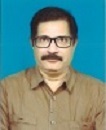Sessions/Tracks
Track 1 : Fish Genetics & Biotechnology
Biotechnology gives effective instruments for the feasible improvement of aquaculture, fisheries, as well as the nourishment industry. Expanded open request for fish and diminishing characteristic marine living spaces have empowered researchers to consider ways that biotechnology can increment the generation of marine nourishment items, and making aquaculture as a developing field of creature inquire about. Biotechnology permits researchers to distinguish and combine characteristics in angle and shellfish to extend efficiency and move forward quality. Researchers are examining qualities that will increment generation of common angle development variables as well as the normal defense compounds marine life forms utilize to battle microbial diseases. Present day biotechnology is as of now making critical commitments and postures noteworthy challenges to aquaculture and fisheries advancement. It sees that advanced biotechnologies ought to be utilized as aides to and not as substitutes for customary technologies in fathoming issues, which their application should be need-driven rather than technology-driven.
-
Biotechnology in fish breeding
-
Transgenesis
-
Chromosome Engineering
-
Biotechnology and fish health management
-
Cryopreservation of gametes or gene banking
Track 2: Fish Pathology & Physiology
Fish pathology locks in the examination of the illness and affliction causing pathogens in oceanic living things, which subsequently allow us the finding out around the affliction and disarranges caused in people who eat up upon point near by its settle. Angle physiology is the authentic examination of how the parcel parts of angle participate within the living angle. It exceptionally well may be risen from point life structures, which is the examination of the shape or morphology of angles. Some time recently long, point life systems and physiology supplement one another, the past managing with the structure of a angle, its organs or segment parts and how they are amassed, for occurrence, could be seen on the breaking down table.
Track 3 : Fish Farming Techniques
Angle cultivating or pisciculture includes raising angle commercially in tanks or walled in areas such as angle lakes, as a rule for nourishment. It is the central shape of aquaculture, whereas other strategies may drop beneath mariculture. A office that discharges adolescent angle into the wild for recreational angling or to supplement a species' common numbers is by and large alluded to as a angle incubation center. Around the world, the foremost imperative angle species created in angle cultivating are carp, tilapia, salmon, and catfish. Demand is expanding for angle and angle protein, which has brought about in broad overfishing in wild fisheries. China gives 62% of the world's cultivated angle. As of 2016, more than 50% of fish was delivered by aquaculture. Farming carnivorous angle, such as salmon, does not continuously diminish weight on wild fisheries. Carnivorous cultivated angle are more often than not nourished fishmeal and angle oil extricated from wild scrounge angle. The 2008 worldwide returns for angle cultivating recorded by the FAOtotaled 33.8 million tons worth about $US 60 billion.
Track 4: Fishing Techniques
Fishing techniques grasp hand-gathering, spearfishing, netting, calculating and catching. Recreational, mechanical and artisanal fishers utilize totally distinctive strategies, additionally , some of the time the comparable procedures. Recreational fishers angle for joy or wear, while mechanical fishers angle for benefit. Artisanal fishers utilize old, low-tech techniques, for survival in third-world nations, and as a social legacy in elective nations. For the most part, recreational fishers utilize don angling methodologies and mechanical fishers utilize netting methodologies.
Different Techniques
Trawling is the foremost common commercial angling strategy utilized in Unused Zealand waters. It is by and large utilized for deep-water fisheries like orange harsh , hooky, ling, hake and squid. A angling vessel tows a huge net behind it, in some cases within the center of the water, and some of the time on the ocean floor. Some of the time two angling pontoons might tow a huge net together. Seining includes dropping a net to encompass and trap a school of angle. There are two sorts of seining – Danish seining, which is utilized to capture angle close the foot of the ocean, and satchel seining, which is utilized to capture angle close the surface. Dredging is utilized to accumulate scallops and shellfish from shallow water. A angling vessel tows a steel net (dig) along the ocean floor, and the net rub up all the shellfish living there.
Most common line angling strategies are hand-lines and long-lines. Hand-lines are basically utilized by recreational fishers. A hand-line may be a single angling line, ordinarily connected to a bar, and held by hand. Long-lines have a fundamental angling line, with parts of shorter lines hanging off it. The shorter lines have bait and snares connected to them. The most line is tied down at each conclusion, and coasts halt the line from sinking. Line angling doesn’t bruise or harm the angle as much as net angling, but you can’t catch as numerous angle as rapidly on a line as you'll in a net.
Track 5 : Marine Science and Marine Biologist
The seas are portion of the lean, external shell of the Soil and marine science is the ponder of this envelope, from the profound ocean to shallow coastal seas: their science, chemistry, topography and material science together make marine science a luxuriously inter-disciplinary science. The seas are energetic and tremendous, they contain most of the Earth's water and carbon and surface warm, and much of its biomass, but they don't work alone. In conjunction with the climate, landmasses and ice (cryosphere), they shape a working machine, driven generally by vitality determined from the sun and the Earth’s insides.
Marine Researchers center their work on both commonsense or connected issues and essential logical questions. The seas give both bounty and risk; they give a riches of nourishment, a endless water supply supply and are the source of most of the warm and carbon utilized in our climate framework, they are the source of ½ the oxygen our biosphere needs; they moreover bring forth expansive storms and typhoons, and transmit vitality over awesome separations as tsunamis, all of which imperil coastal populaces, which are a critical division of the Earth’s add up to populace.
Types of marine scientist
Marine science is a broad-ranging field. Within it, you can work in areas as diverse as:
-
biogeochemistry and ecosystems dynamics
-
coastal processes
-
geology and geophysics
-
hydrographic surveying
-
marine biology
-
oceanography, ocean modelling and forecasting
-
palaeoceanography
-
zoology.
Marine biologists think about life within the seas, and some of the time the seas themselves. They may explore the conduct and physiological forms of marine species, or the illnesses and natural conditions that influence them. They may moreover survey the impacts of human exercises on marine life. Numerous marine scientists work beneath work titles such as natural life scientist, zoologist, angle and natural life scientist, fisheries scholar, oceanic scientist, preservation scholar, and organic specialist.
Track 6 : Fisheries Science and Fish Nutrition
Fisheries science is the scholarly teach of overseeing and understanding fisheries. It could be a multidisciplinary science, which draws on the disciplines of limnology, oceanography, freshwater science, marine science, preservation, environment, population dynamics, financial matters and administration to endeavor to supply an coordinates picture of fisheries. In a few cases modern disciplines have risen, as within the case of bioeconomics and fisheries law. Fisheries science is ordinarily instructed in a college setting, and can be the center of an undergrad, master's or Ph.D.program. A few colleges offer completely coordinates programs in fisheries science.
The fisheries and aquaculture industry can be changed by utilizing nanotechnology with unused rebellious like fast torment affirmation, upgrading the constrain of angle to acclimatize drugs like hormones, immunizations and supplements et cetera quickly. As demonstrated by National Science Establishment (USA), current figure checks the rising of estimation of the by and large nanotechnology industry at USD one trillion by 2015. This may well be conceivable on account of tremendous ability of nanotechnology in electronic and materials science conjointly in people, creature food and development divisions counting aquaculture and its application in biomedical and standard sciences for examination of biomolecules, advancement treatment, progress of non-viral vectors for quality treatment, as transport vehicle for DNA, protein or cells; concentrating on steady development, clinical finding and therapeutics et cetera. However a significant sum of alter assess is depended upon to update the potential utilization of nanote in aquaculture, at show up, there are distinctive looks without limits utilization of this advancement in point success organization, water treatment in aquaculture, creature raising, secure and post assemble headway.
Track 7 : Fish Disease and Parasites
Like people and other creatures, angle endure from illnesses and parasites. Angle protections against infection are particular and non-specific. Non-specific guards incorporate skin and scales, as well as the bodily fluid layer discharged by the epidermis that traps microorganisms and represses their development. On the off chance that pathogens breach these guards, angle can create incendiary reactions that increment the stream of blood to tainted regions and provide white blood cells that endeavor to devastate the pathogens. Particular guards are particular reactions to specific pathogens perceived by the fish's body, that's adaptative safe reactions.
In later a long time, antibodies have gotten to be broadly utilized in aquaculture and fancy angle, for illustration antibodies for furunculosis in cultivated salmon and koi herpes infection in koi. Some commercially critical angle infections are VHS, ich and spinning infection.
Track 8: Fish Physiology
Fish physiology is the logical think about of how the component parts of angle work together within the living angle. It can be differentiated with angle life structures, which is the think about of the frame or morphology of angles. In hone, angle life systems and physiology complement each other, the previous managing with the structure of a angle, its organs or component parts and how they are put together, such as may be watched on the dismembering table or beneath the microscope, and the afterward managing with how those components work together within the living angle.
Track 9 : Fisheries Industries Update
The Fisheries industry incorporates any industry or movement concerned with taking, refined, handling, protecting, putting away, transporting, showcasing or offering angle or angle items. It is characterized by the Nourishment and Agribusiness Organization as counting recreational, subsistence and commercial angling, and the collecting, preparing, and showcasing segments. The commercial action is pointed at the conveyance of angle and other fish items for human utilization or as input components in other mechanical forms. Straightforwardly or by implication, the business of over 500 million individuals in creating nations depends on fisheries and aquaculture.
There are three principal industry sectors:
-
The commercial sector
-
The traditional sector
-
The recreational sector
Track 10 : Fisheries Conservation & Management
Fisheries management is the movement of ensuring fishery assets so maintainable misuse is conceivable, drawing on fisheries science, and counting the prudent guideline. Advanced fisheries administration is frequently alluded to as a administrative framework of suitable administration rules based on characterized destinations and a blend of administration implies to execute the rules, which are put in put by a framework of checking control and reconnaissance. A prevalent approach is the biological system approach to fisheries administration. Concurring to the Nourishment and Horticulture Organization of the Joined together Countries (FAO), there are "no clear and by and large acknowledged definitions of fisheries administration". In any case, the working definition utilized by the FAO and much cited somewhere else is:
The coordinates handle of data gathering, investigation, arranging, meeting, decision-making, assignment of assets and detailing and usage, with requirement as vital, of controls or rules which administer fisheries exercises in arrange to guarantee the proceeded efficiency of the assets and the achievement of other fisheries goals.
Track 11 : Aquaculture Methods
Aquaculture, conjointly alluded to as blue cultivating, is that the cultivating of angle, shellfish, molluscs, sea-going plants, green growth, and distinctive sea-going living beings. development conferences includes discourses of developing new and brine populaces underneath controlled conditions, and may be differentiated with trade angling, that's that the gathering of untamed angle. As populaces increment around the world, the request for angle item has conjointly up. Angle provide low-fat, nutritive nourishment sources and basic oils for people of all ages. The different ways of development are seriously, Semi Seriously, ways.
Track 12 : Aquaculture Engineering
Aquacultural engineering could be a multidisciplinary field of designing that points to illuminate specialized issues related with cultivating oceanic vertebrates, spineless creatures, and green growth. Common aquaculture frameworks requiring optimization and building incorporate ocean cages, lakes, and recycling frameworks. The plan and administration of these frameworks is based on their generation objectives and the financial matters of the cultivating operation. Aquaculture innovation is changed with plan and advancement requiring knowledge of mechanical, organic and natural frameworks at the side fabric designing and instrumented. Moreover, building procedures regularly include arrangements borrowed from wastewater treatment, fisheries, and conventional agriculture.
Aquacultural engineering has played a part within the development of the aquaculture industry, which presently accounts for half of all seafood items expended within the world. To recognize compelling arrangements the teach is combined with both angle physiology and trade financial matters information.
Track 13 : Freshwater Fisheries
Freshwater fisheries are those that spend a handful or the lion's share of their lives in new water, for occasion, streams and lakes, with a saltiness of beneath 0.05%. These circumstances differentiate from marine conditions from different points of view, the foremost clear being the capability in levels of saltiness. To outlive modern water, the angle require an extent of physiological modifications. 41.24% of each known sorts of angle are found in new water. This can be by and large a result of the quick speciation that the scattered living spaces make conceivable. Whereas supervising lakes and lakes, one may utilize an vague central models of speciation from whereas analyzing island biogeography.
Track 14 : Aquatic Ecology
Water could be a need for all living things on soil and is one of the foremost critical normal assets streaming from our forests. With looming issues like climate alter and squeezing vitality requests, distant better;a much better;a higher;a stronger;an improved"> a much better understanding of how to preserve freshwater biological systems is basically critical in arrange to meet our expanding require for freshwater.
Freshwater environment is the intrigue ponder of rivers, lakes, streams, regular bodies of water, underground water stores, and encompassing riparian ranges. Sea-going scientists ponder common populaces of living beings within the water, learning almost the conveyance and plenitude of oceanic life forms, generally angle, their prey and their predators, and their intelligent with their environment.
Track 15 : Deep Water & Demersal Fisheries
In spite of the fact that the angles that live within the profound seas are habitually depicted as deep-sea angles it has ended up standard to allude to those that are abused within the fisheries as deep-water angles. This dodges disarray with the term deep-sea fishery meaning a fishery that takes put in far off waters. It is getting to be acknowledged that a deep-water angle is one that lives, at slightest for most of its life cycle, at profundities more noteworthy than 400 meters. The misused angles of the mainland rack are generally divided into two categories, pelagic and demersal. Within the profound ocean the pelagic expands from the surface to deep profundities and it is regular to isolate it into three zones. The epipelagic zone incorporates all those angle living within the upper photic layer of the sea, such as the fish angles. The mesopelagic zone ranges the profundity run from underneath the photic zone down to around 1000 meters and underpins an inexhaustible and different angle fauna.
Track 16 : Shellfish Fisheries
Shellfish could be a nourishment source and fisheries term for exoskeleton-bearing oceanic spineless creatures utilized as nourishment, counting different species of molluscs, shellfish, and echinoderms. In spite of the fact that most sorts of shellfish are gathered from saltwater situations, a few kinds are found in freshwater. In expansion, a couple of species of arrive crabs are eaten, for illustration Cardisoma guanhumi within the Caribbean. Despite the title, shellfish are not a kind of angle, but are basically water-dwelling creatures. Numerous varieties of shellfish (shellfish in specific) are really closely related to creepy crawlies and 8-legged creature, making up one of the most classes of the phylum Arthropoda. Cephalopods (squids, octopuses, cuttlefish) and bivalves (clams, shellfish) are molluscs, as are Gastropods (sea-going species such as whelks and winkles; moreover arrive species such as snails and slugs.
Shellfish utilized as a nourishment source by people incorporate numerous species of clams, mussels, clams, winkles, and scallops. A few shellfish that are commonly eaten are shrimp, lobsters, crawfish, and crabs. Echinoderms are not as habitually gathered for nourishment as molluscs and shellfish; in any case, ocean urchin roe is very well known in numerous parts of the world. Most shellfish eat a eat less composed essentially of phytoplankton and zooplankton. Shellfish are among the foremost common nourishment allergens.
Track 17 : Sea Food Sustainability
Sustainable seafood is fish that's either caught or cultivated in ways that consider the long-term essentialness of gathered species and the well-being of the seas, as well as the employments of fisheries-dependent communities. It was to begin with advanced through the maintainable fish movement which started within the 1990s. This operation highlights overfishing and ecologically damaging angling strategies. Through a number of activities, the development has expanded mindfulness and raised concerns over the way our fish is obtained.
Track 18 : Sea Food Handling
All nourishments, counting fish, must be dealt with and arranged in a clean range to maintain a strategic distance from cross-contamination. Continuously keep in mind to keep your hands, planning region and utensils clean. Never let crude fish come in contact with as of now cooked or ready-to-eat nourishments (e.g. servings of mixed greens, natural product, smoked angle). Whether you're putting away new angle or defrosting solidified angle in your fridge, make beyond any doubt that the juices from raw fish don't dribble onto nourishment that has as of now been cooked or nourishment that will not be cooked. Marinades are extraordinary for fish but ought to not be spared and utilized as a sauce unless the marinade has been cooked to a temperature of at slightest 165°F to dispose of microorganisms from the crude angle. Continuously marinate within the fridge in a glass or plastic container.
Never serve cooked fish on a plate that held the crude item without appropriate cleaning. Store scraps, appropriately wrapped, within the fridge inside 2 hours. Bacteria will develop quickly within the temperature “Danger Zone” of 40-140°F so keep hot nourishment over 140°F and cold nourishment underneath 40°F.
Track 19 : Aquatic Parasitology & Immunology
The control of illnesses and parasites in aquaculture is basic to meet the prerequisites of creature welfare and financial generation. That's why we are managing with modern, elective ways to control pathogens and keep angle healthy. Parasites are not as it were perilous pathogens in captive angle. Presented parasites from other landmasses may posture a genuine danger to non-adapted endemic angle species. One of these outsider parasites is the eel swim bladder nematode Anguillicola crassus. We center on understanding how the safe framework of our local eel species bargains with this unused parasite.
Endemic parasites, be that as it may, are found in a captivating assortment in wild angle, where they seldom pull in consideration as pathogens. They are indispensably parts of oceanic communities. Numerous angle parasites have complex life cycles that include a few has at diverse trophic levels, and much remains to be investigated approximately their work within the ecosystem. We are interested to memorize how these parasites could modify the part of their has within the sea-going nourishment web. Furthermore, we are utilizing our involvement within the assurance of push and immune parameters to get quantifiable prove for the welfare of captive angle. It is our objective to supply logical information on how to progress the cultivation conditions for angle in captivity.
Track 20 : Aquatic Toxicology
Oceanic toxicology is the ponder of the impacts of fabricated chemicals and other anthropogenic and common materials and exercises on oceanic life forms at different levels of organization, from subcellular through person living beings to communities and biological systems. Sea-going toxicology may be a multidisciplinary field which coordinating toxicology, sea-going biology and oceanic chemistry.
This field of ponder incorporates freshwater, marine water and silt situations. Common tests incorporate standardized intense and unremitting harmfulness tests enduring 24–96 hours (intense test) to 7 days or more (unremitting tests). These tests degree endpoints such as survival, development, propagation, that are measured at each concentration in a slope, along side a control test. Regularly utilizing chosen life forms with biologically important affectability to toxicants and a well-established writing foundation. These life forms can be effortlessly procured or refined in lab and are simple to handle.
Track 21 : Advance Technology in Aquaculture and Fisheries
Ultra violet system in Aquaculture
ULTRAAQUA UV frameworks ceaselessly purify more than 100,000 m³/h of water in aquaculture frameworks. Millions of salmon, sturgeons, eels, turbot, ocean bass etc. are created in aquaculture frameworks around the world. Here ULTRAAQUA UV frameworks have been chosen to extend security from contamination infections in this manner ensuring millions of contributed dollars. Infections such as Irresistible Salmon Iron deficiency (ISA) are anticipated in Chile through the utilize of ULTRAAQUA UV frameworks. This has given the regarded angle ranches security and reassurance that the angle isn't infected. The UV frameworks are too simple to preserve, the light lifetime is 16.000 hours guarantied and they don't take up time within the every day schedules. Usually why our UV frameworks are exceedingly recommended and utilized in a few hundreds of aquaculture frameworks around the world. Water plenitude and virtue proceed to decrease whereas infection concerns found in source waters proceed to extend. At the same time, expanded utilization of angle has driven to developing requests for higher stock densities within the same incubator impression. Aquafina UV Frameworks are idealize for utilize in: Angle incubators , Brooding, recovery offices, Depuration offices, Aquariums Handling Plants Influent/effluent treatment.
UV Applications in Aquaculture
Track 22 : Industrial Aquaculture
Industry aquaculture activity concerned with extraction, refined, preparing, protecting, putting away, transporting, promoting or offering angle or angle items. Catching of angle, refined the angle, offering the angle and angle related items in a great quality in showcase are the commercial segment practices. Traditional segment incorporate commercial segment but it is in exceptionally little scale, the angling is in a conventional way such as pole and handle, bolts and spears, toss nets and drag nets, etc. Different organizations give Angling books, magazines, plan and building of water crafts with arrangement of settlement, direct for angling enterprise, fabricate and retail of handle and attire. The sea covers 71% of the earth's surface and 80% of the esteem of abused marine assets are ascribed to the angling industry.
-
Commercial sector
-
Traditional sector
-
Recreational sector
-
International disputes
Market Analysis
Important and Scope:
From olden days, fishing from lakes, rivers and oceans has been a major source of food, provider of employment and other economic benefits for humanity. Aquaculture is counted be probably the fastest growing food-producing sector in the world currently. The growing concern and awareness about the health advantages and nutritional value associated with seafood surge its consumption. Also, rising demand for fish oil in various industries like healthcare, pharmaceuticals, food and dietary supplements among others further contribute to the market growth significantly. The combined result of the growth of aquaculture worldwide and the expansion in world population is that the average annual per capita supply of food fish for human consumption has grown ten times in the past 2 decades.
Introduction:
Fisheries & Aquaculture is the quickest developing food production system in the global due to the lack of naturally available varieties of fisheries harvested in natural environments. The increasing consciousness of the dietary benefits and nutritional value associated with seafood has accelerated its consumption. Aquatic products, particularly cultivated salmon and shrimps, are exceptionally nutritious sources of food, consisting of important proteins, vitamins A, B, D, and Niacin, minerals like iron, iodine, zinc, and osphorus. These foods also have a significant source of Omega-3 fatty acids for example docosahexaenoic acid (DHA) and eicosapentaenoic acid (EPA).
Worldwide aquaculture and Fisheries market values at $160.98 billion in 2017 and is expected to grow $224.2 billion by 2022 growing at a CAGR of 5.15 percent during the forecast period.
As per reports an annual growth rate for the worldwide aquaculture industry of 4.46 percent for the 5year period between 2018 and 2022. In 2018, the report predicts a CAGR of 3.72; a CAGR of 4.12 percent in 2019; 4.50 percent in 2020; 4.83 percent in 2021; and 5.15 percent in 2022.
Fisheries & Aquaculture in Europe:
In Europe, Consumption of fish in the EU increased for nearly all of the main commercial species. It reached 24,33 kg per capita, 3% more than in 2015 aquaculture accounts for about 20% of fish production and directly employs some 85 000 people. The section is mainly composed of SMEs or micro-enterprises in coastal and rural areas. Europe aquaculture is eminent for its high quality, sustainability and consumer protection standards. EU overall output has been more or less constant in volume since 2000 whereas worldwide production, at the same time, has been developing by almost 7% per year.
Fisheries & Aquaculture in America:
Marine Aquaculture in the U.S contributes to seafood supply, supports commercial fisheries, restores habitat and at-risk species, and maintains economic activity in coastal communities and at working waterfronts in every coastal state. Aquaculture also supports commercial and recreational fisheries. About 40% of the salmon caught in Alaska and 80-90% in the Pacific Northwest start their lives in a hatchery - contributing over 270 million dollars to the Commercial Fisheries.
Fisheries & Aquaculture in Asia Pacific:
Asia Pacific aquaculture market is expected to grow on account of higher fish consumption in coastal regions including India, Australia, Japan and numerous South Eastern countries. Local civilizations are known to practice small scale aquaculture since ancient times in South East Asia and Pacific in the form of shellfish, shrimp and sea cucumbers cultivation and seaweed farms. Asia Pacific (excluding China) was the 2nd largest market for aquaculture with market demand of 17.965.2 kilo tons in 2013, and is estimated to increase with a CAGR of 2.1% from 2014 to 2020 due to technological innovation and climatic conditions in this region.
Global Fisheries Aquaculture Universities:
• University of Florence, Italy
• Kyoto University, Japan
• Ehime University, Japan
• Hokkaido University, Japan
• Wageningen University, Netherlands
• University of Gothenburg, Sweden
• Natioanl Taiwan Ocean University, Taiwan
• Playmouth University, UK
• University of Aberdeen, UK
• University of Stirling, UK
• University of Hall, UK
Global Fisheries & Aquaculture Societies:
• World Aquaculture Society, USA
• American Fisheries Society, USA
• U. S. Aquaculture Society, USA
• National Aquaculture Association, USA
• Asian Fisheries Society, Malaysia
• Aquaculture Association of Canada, Canada
• Aquaculture Association of S. Africa, South Africa
• European Aquaculture Society, Europe
• Brazilian Aquaculture Society (AQUABIO), Brazil
• Indonesian Aquaculture Society, Indonesia
• Society of Aquaculture Professionals, India
• Malaysian Fisheries Society, Malaysia








